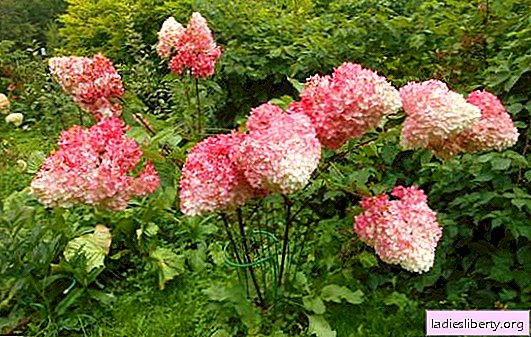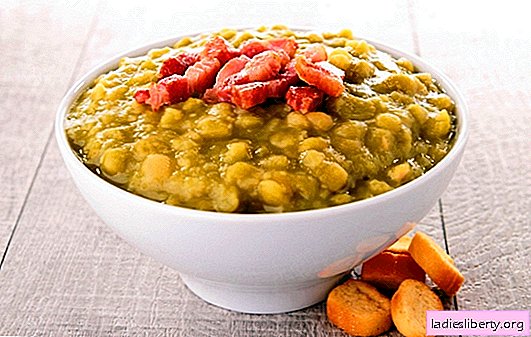
The maintenance of quail at home is not a troublesome task at all, in any case, no more difficult than caring for any other poultry.
Recently, these funny birds began to be bred even in city apartments, where they live in cages for parrots.
Content of quail at home: profitable or not?
Quail - the bird is quite unpretentious, so it’s easier to take care of it. All that is needed for them to rush fruitfully is maintaining the necessary temperature and light conditions, as well as using balanced feed.
A big plus of the content of quail is that these birds are not too large in volume, so cages with them can be placed anywhere: a house, a barn, a cottage, even an apartment. Therefore, first of all, decide why you are growing this bird?
Typically, quail is grown for one of two purposes:
1) tender meat with low calorie content;
2) egg production.
If your main goal is eggs, then the most suitable breeds are:
Japanese
English white;
Manchurian golden.
On average, laying hens of these breeds carry 250-290 eggs per year, so even 10 females can significantly replenish your family budget.
If you want to provide your family with delicious and low-calorie meat, then you should choose the Pharaoh breed. The females of this breed are much weaker, but they are gaining quite a good weight, as for such small birds - 300 g.
Content of quail at home: choose a breed and healthy chickens
Before you begin to grow quail, you need to learn how to properly care for young shoots. Most people who do not have much experience in this business make boxes of plywood or cardboard, but such a dwelling is not entirely suitable for small quails. The whole reason is hypersensitivity, they will quail even to small temperature differences. Therefore, if you do not prepare a special cage in time, there is a risk of being left without a young livestock at all.
As we already said, the brood is the best option for young quail. This special cage is quite simple to make. Take a few wooden blocks, knock them into the frame and beat them with fiberboard or thick plywood. To maintain the desired temperature inside the cell, use infrared incandescent lamps. This is a very important point, especially in the cold season. As the chicks grow, heating can be gradually reduced.
Quail boxes for small ones should be regularly kept clean; the bottom should be covered with clean paper, which should be changed regularly as it becomes dirty. After the incubation period, young animals should immediately be planted in a box, where at the bottom there should be a grid with 5X10 mm cells. This will allow young birds to feel confident on their feet and avoid the so-called "twine", when the quail legs move apart on different sides, the net in this case serves as a support.
As we mentioned above, temperature maintenance is very important for young shoots, as they tolerate even a slight cooling, which can lead to their death.
Young quail immediately after hatching should be provided with all the necessary food, as they immediately after birth have the ability to feed on their own. In principle, the whole life of quail is built on poop, its use and search. Due to the fact that this bird grows very quickly, it must be provided with all the necessary feed with a high content of proteins, vitamins and minerals. From the first hours of life, they can already feed the following foods:
boiled eggs (finely chopped);
cottage cheese with breadcrumbs;
corn;
chopped greens;
compound feed for young birds aged 1 to 10 days.
Young growth very quickly grows: in just 2 months they gain weight 20-25 times more than the initial and almost reach the size of adult quail. For example, chickens during this time gain only 14 times their weight and grow much longer into an adult bird.
In the first 7 days of life, the optimum temperature for young animals is 35 ºC, after 2 weeks it can be reduced to 30 ºC.
An important point is the lighting of the cell. In the first 2 weeks, light should be left around the clock. In the period from 3 to 6 weeks, it is advisable to leave the lighting according to this principle:
1 hour on - 3 hours off;
3 hours on - 1 hour off.
After the sixth week, the light must be turned on for 12 hours until it is fully grown.
If you intend to place bird cages on the balcony, then it must be glazed, and this applies only to adult quails, it is not recommended to take risks with young animals.
Puberty puberty comes after 40 days of life. Just during this period they need to be transferred to cages for an adult bird. If you tighten this process, the period of laying eggs in a bird can come much later. If done correctly, intensive egg laying in quail begins at the age of two months.
Around the same time, males should be selected. Some of them will be left to the tribe, the rest must be transferred to enhanced feeding for subsequent slaughter for meat.
The content of quail at home: how to feed, how to care
Adult individuals are not as demanding as young people, so they can be raised in a barn, in the country or in a warmed apartment loggia. All that needs to be monitored: temperature conditions and the absence of drafts. In winter, make sure that the temperature does not drop below 16ºC.
An adult bird must be kept with the expectation of: 1 male - 4 laying hens. As we have already said, young animals live together only until puberty, then they need to be resettled in different cells.
To create the perfect quail room, make sure it is adequately ventilated and warm and dry. If at least one of the conditions is not met, the birds will begin to lose feathers and their egg production will decrease.
As for lighting, daylight hours for adults last about 17 hours. It is also quite often practiced to maintain lighting in layers throughout the day. This method is quite effective, and makes it possible to increase egg production by 2-3 times. However, this method also has a big drawback - laying hens live much less.
When keeping quails at home, monitor the temperature in the room, it should be in the range of 18-25ºC, and humidity not higher than 50%. If any of these conditions is not met, the quail will grow very slowly and egg laying will deteriorate.
When breeding an adult bird, do not forget that feeders and drinking bowls for them should be outside the cages, and not inside. This will make it easier to maintain cleanliness in the cells and reduce feed consumption.
The number of feed intake for these birds should be 2-3 times a day, 30 g per quail. The most suitable quail food is finely chopped greens, grain (sprouted), vegetables or sunflower seeds. You can also use feed that give chickens.
It is advisable to add boiled fish and bone meal to the feed at least 2 times a week. To ensure that the bird grows healthy and productive, do not forget to add chalk to the feed.
Quail Content Methods
To date, the most popular are 2 methods: cohabitation of birds by families or separate living of laying hens and male. Each of these methods has its pros and cons, so which one is more suitable - you decide.
Keeping Families in a Single Cell
The most suitable number in such families is 8 birds - 6 laying hens and 2 males. If the oviposition is reduced at some point, change the males.
Layers live separately, and the male needs to be planted only for a while
This method is considered to be more productive and profitable. The fact is that with this option, only one male is enough for 10 layers, so feed consumption is also significantly reduced.
The main advantages of breeding quail at home
The main advantage of breeding this bird is that it is a very profitable business, besides it does not require much time and effort, so even beginners who do not have any special knowledge and experience will be able to deal with it.
Another important advantage is that the quail is a small bird, respectively, does not require a large amount of space. This allows you to breed it anywhere: a cottage, a barn, an apartment. Even on the most ordinary city balcony of a multi-story building, you can easily maintain several hundred heads of quail.
It is as if these small birds were created to breed them at home, since they absolutely do not like contact with other animals, so raising them on farms is a more difficult task. The main reason for this is that quails rarely suffer from various infectious diseases, but they easily become infected from another poultry.
Probably, this was the reason for such an increased popularity of breeding this bird at home. Even if you do not plan to earn a lot of money on quail, a few heads of this bird will easily provide you and your family with a fresh egg.
To summarize, it must be said that quail is a very unpretentious bird that can produce many eggs and low-calorie meat. But so that the birds always remain as productive as possible, do not forget to regularly feed the desired diet of feed, as well as monitor the room temperature, cleanliness and lighting.











